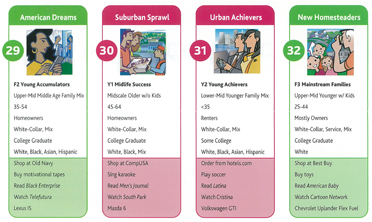There are numerous consumers all over the world buying different products at any given time. Buyers know that their product will not be appealing to every person in the market. Market segmentation allows companies to divide the market into small segments based on consumer characteristics, behaviors and needs. Market Targeting allows the company to evaluate the market segments and choose which will be most beneficial to the business.
Market Segmentation
There are numerous categories associated with market segmentation. There is geographic segmentation that divides the market into regions, states, cities, and neighborhoods. Demographic segmentation divides the market into age, income, life cycle, education, gender, and religion segments. Age life cycle segmentation refers to the targeting of children for lunch-ables or age specific products. Gender refers to segmenting products between males and females. Income refers to segmenting products to high or low income consumers often promoting the sale of luxury goods. Psychographic Segmentation refers to breaking the market into segments that are based on social class or lifestlyes. This is associated with the idea that consumers buy products that reflect their personalities. Lastly, there is behavioral segmentation this segment includes occasion, benefit, user and usage, and loyalty. Occasion segmentation refers to seasonal sales, like the advertisement of fireplaces in winter. Benefit segmentation refer to creating a product based on the benefits consumers see in it. User and usage refer to advertising based on where people are at with buying the products, and how often they use the product. Loyalty refers to people who are loyal to brands or stores.
Market Targeting
Companies have to evaluate the market segments that they want to target. They do this based on market size, growth, and attractiveness. Companies need to make sure they can see growth that is steady and not overwhelming to the company. They also need to assess long and short term attractiveness based on competition and suppliers. The target market is the product of market segmentation that the company will choose. Undifferentiated marketing applies to a company who goes after the whole market not paying attention to market segments. Differentiated marketing applies to a company targeting several segments with different offers. Concentrated marketing applies to a company who goes after one large segment and focuses on it. Micromarketing applies to targeting local customers by tailoring products to their needs. Lastly, local marketing markets to the needs of local segments of stores and specific stores.
Applied Learning
Market segmentation is present in my marketing plan (see applied work page). In the creation of childhood exercise class we are segmenting current users classified under behavior segmentation. It also is demographic segmentation because it focuses on parents, and children.
Sources
Kotler, P. & Armstrong, G. (2014). Principles of Marketing. Upper Saddle River, NJ: Pearson Education, Inc.
